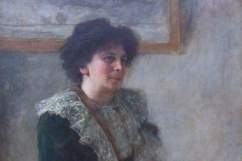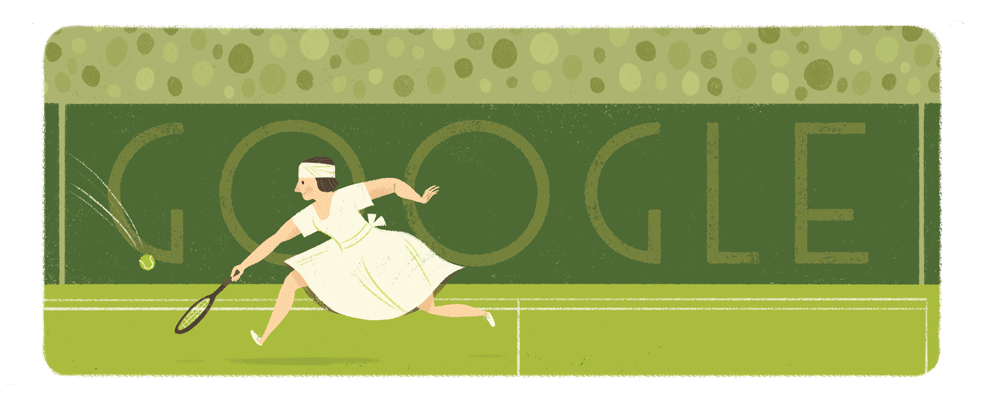
(Google)
French tennis legend Suzanne Lenglen’s 117th birthday is being celebrated with a Google Doodle.
Lenglen was born May 24, 1889, and died in 1938.
“Back in the day, tennis was a rigid affair. Amateurs couldn’t compete with pros, and participation fees for important matches were astronomical. Then Suzanne Lenglen came along,” Google says. “She had a staggeringly successful career, and even starred in one of the earliest instructional films. More importantly, she broke down barriers through her passionate play, non-traditional wardrobe, and outspoken stance against the sport’s formalities.
“With Lenglen’s influence, tennis gained the attention it deserved, and became a sport not just for some, but for all.”
Lenglen, who was nicknamed La Divine by the French press, was known for her flamboyant and intense style on the court made, which helped make her one of the first international female star athletes.
Here’s what you need to know:
1. She Was Born in Paris & Began Playing Tennis to Build Up Strength After Being Weakened by Chronic Asthma

Suzanne Lenglen in 1924. (Keystone/Getty Images)
Suzanne Lenglen was born in Paris, France, to Charles and Anaïs Lenglen.
She began playing tennis at the age of 10 after overcoming childhood illness, including chronic asthma, according to the Historical Dictionary of Tennis. Her illness had left her weak, and her parents thought playing tennis would help her build up strength.
Lenglen was coached by her father and became successful at her early age, playing in the French National tournament at 14. She reached the finals, but lost to the defending champion.
2. She Dominated the Tennis World During Her Prime, Winning 8 Grand Slam Titles
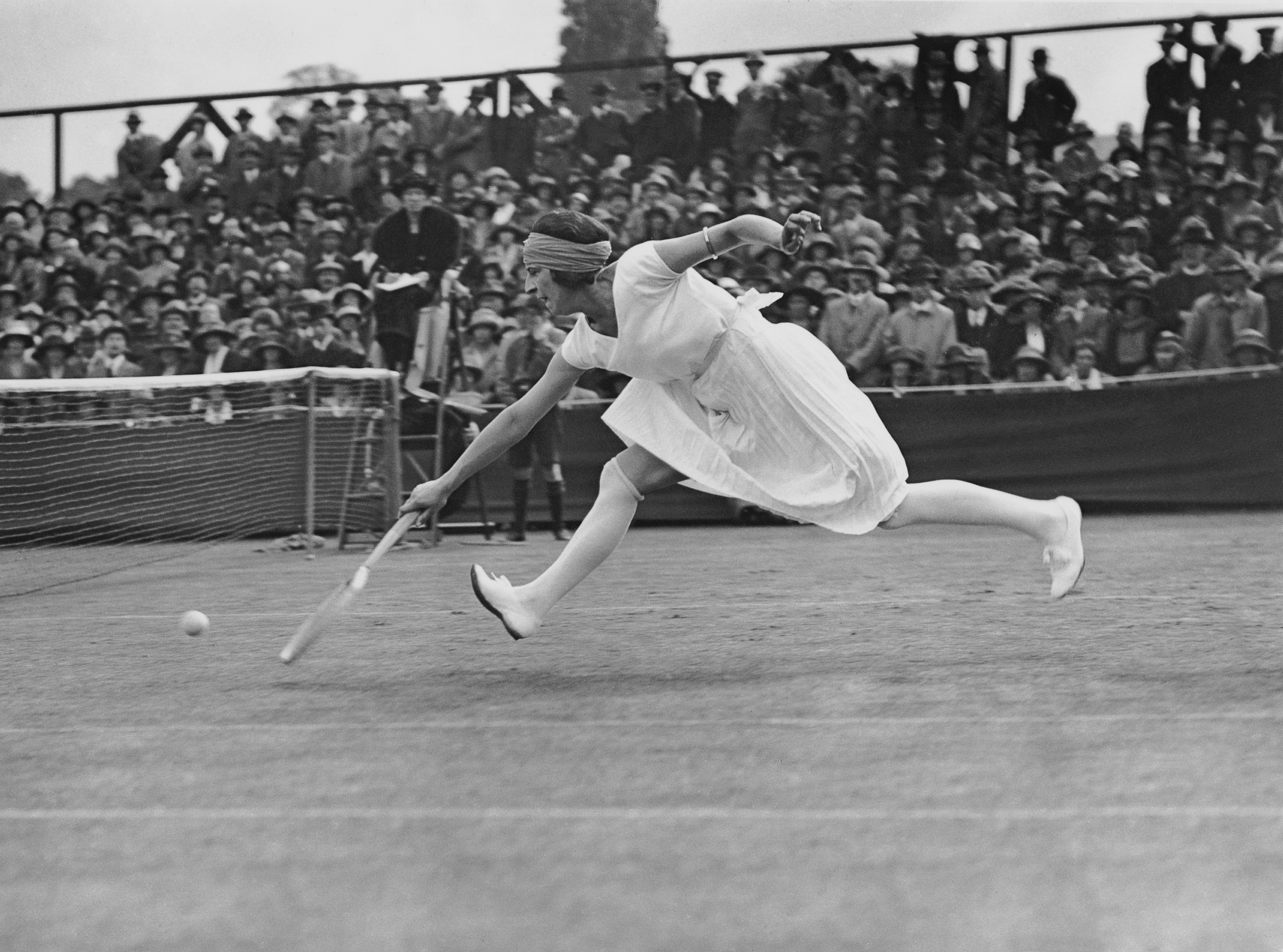
French tennis player Suzanne Lenglen in action at Wimbledon. (Hulton Archive/Getty Images)
After her play in the French National tournament in 1914, major tournaments were put on hold because of World War I. When the war ended, Suzanne Lenglen emerged as the most dominant female tennis player in the world.
Lenglen won 250 championships, including 83 in singles, 74 championships and 93 mixed doubles titles, according to the International Tennis Hall of Fame, which cites research by Wimbeldon librarian Alan Little and Bud Collin’s History of Tennis.
She had a 116-match winning streak, and was unbeaten in 1919 and 1920, and then from 1922 to 1926.
Lenglen won eight Grand Slam titles, including the French Open in 1925 and 1926, and Wimbeldon in 1919, 1920, 1921, 1922, 1923 and 1925.
Lenglen also won two gold medals, in singles and mixed doubles, at the 1920 Olympics in Antwerp. She also took home the bronze in women’s doubles.
“She owned every kind of shot, plus a genius for knowing how and when to use them. She never gave an opponent the same kind of shot twice in a row,” American contemporary Elizabeth Ryan told Sports Illustrated. “She’d make you run miles … her game was all placement and deception and steadiness. I had the best drop shot anybody ever had, but she could not only get up to it but was so fast that often she could score a placement off it.”
3. She Became the First Female Tennis Celebrity & Popularized Women’s Tennis
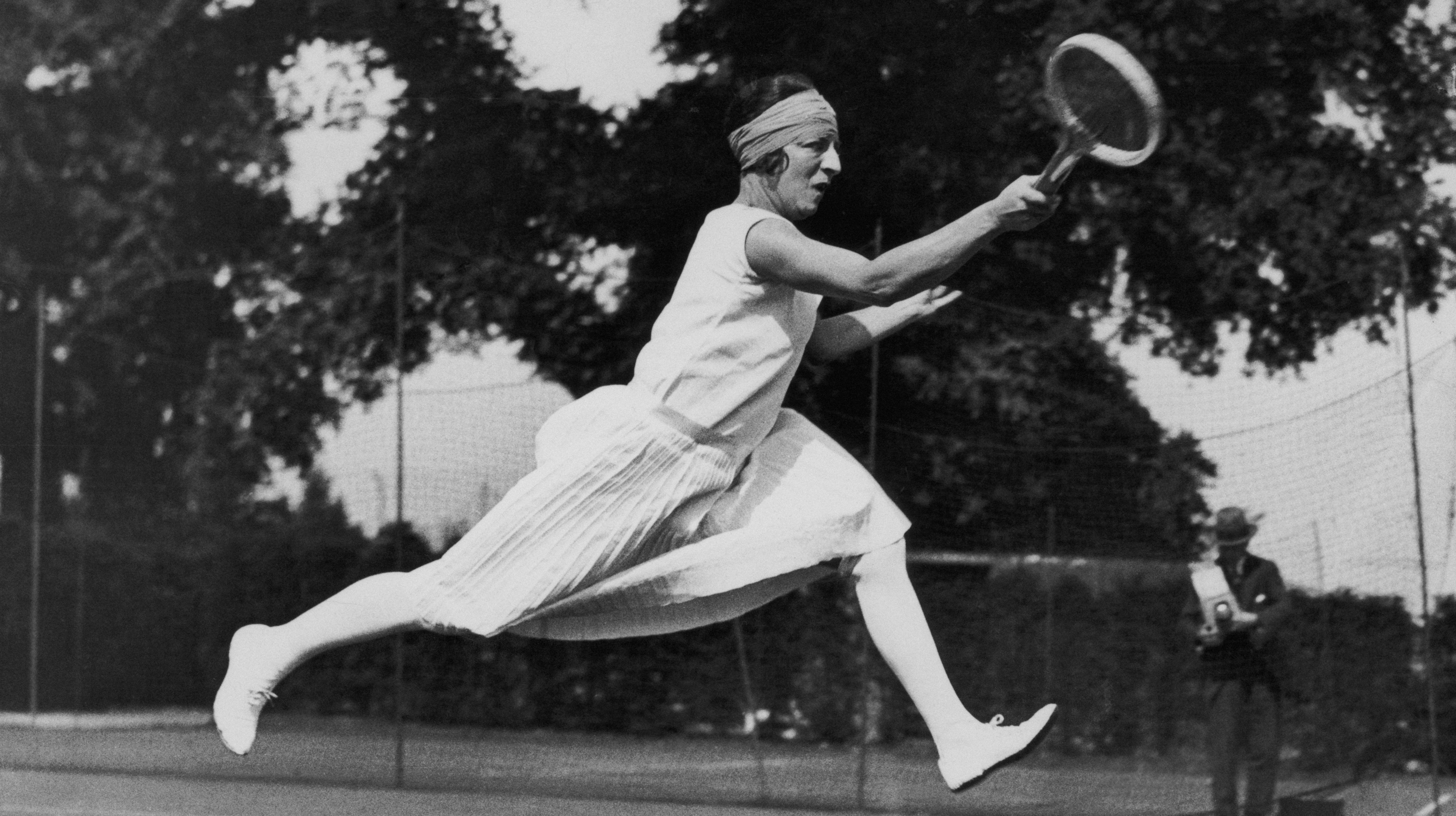
French tennis player Suzanne Lenglen competing at Wimbledon, 1926. (Central Press/Hulton Archive/Getty)
Suzanne Lenglen was the first female tennis star, attracting crowds to women’s tennis matches for the first time ever.
“She came to represent a sort of resilient, resurgent, glorious France. She was, in the eyes of the French press, a reborn Joan of Arc. They called her ‘the Goddess.’,” author Larry Engelmann told CNN. “After all of the suffering that the French people had gone through in the First World War, suddenly there was the emergence of this girl, this young woman who is a very dominating figure in a very popular sport.”
Englemann, who wrote “The Goddess & the American Girl: The Story of Suzanne Lenglen and Helen Wills,” told CNN that Lenglen, “revolutionized women’s tennis, showing that women could be just as tough and just as aggressive and just as capable as men on the tennis court.”
She helped pave the way for modern tennis stars, and was the first international female sports idol.
“If normalcy for women meant back to the kitchen, then Suzanne and other ladies of her ilk were heading full tilt in the opposite direction,” a 1920s TV report stated, according to CNN.
Lenglen was also known for her style, according to Britannica:
Although admired for her athleticism, Lenglen was equally renowned for her daring fashion choices. While most players preferred the traditional costume of a corset, hat, blouse, and long skirt, Lenglen’s athletic wardrobe consisted of perfectly coordinated short pleated skirts, sleeveless blouses, and short-sleeved calf-length dresses worn without a petticoat. She often wrapped her head in a bandeau fastened with a jeweled pin. Her glamorous image was adored by fans and even led to the creation of the Lenglen tennis shoe.
Her on-court antics also attracted attention.
4. She Was Diagnosed With Leukemia in 1938 & Died a Month Later
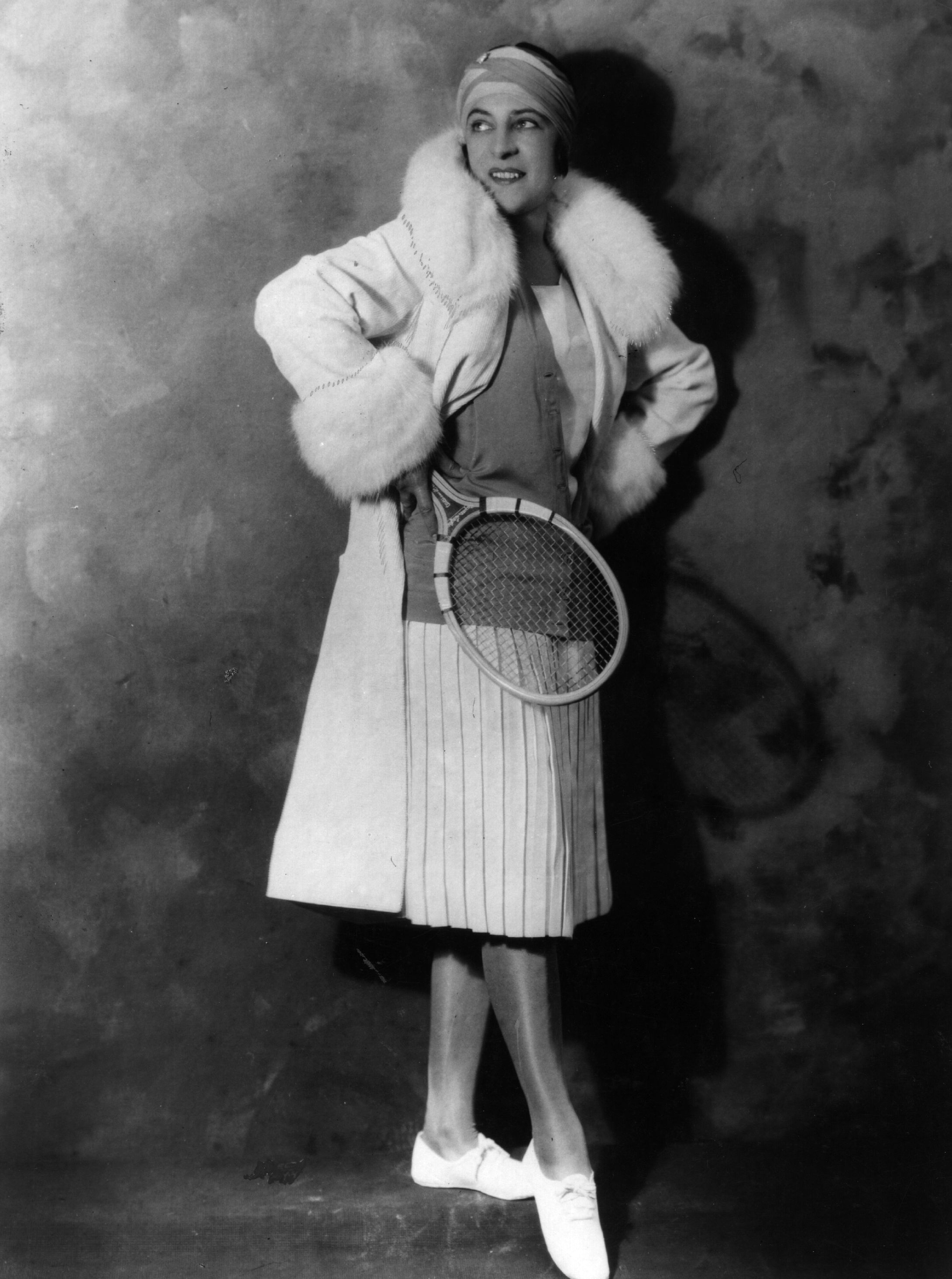
French tennis player Suzanne Lenglen modeling a new outfit, a below knee length pleated skirt and coat. (General Photographic Agency/Getty)
Lenglen turned professional in 1926, according to the International Tennis Hall of Fame.
She then retired from competitive tennis in 1927 to run a school in Paris along with her lover, Jean Tillier, according to Tennis-Histoire.com.
Tragically, Lenglen was diagnosed with leukemia in June 1938 when she was only 39. She went blind three weeks later and died of pernicious anemia in July.
She was never married and did not have any children.
5. She Was Inducted Into the Tennis Hall of Fame in 1978 & Has a Court Named for Her at Roland Garros, the Site of the French Open
Suzanne Lenglen was inducted into the International Tennis Hall of Fame in 1978.
A court at Roland Garros, the home of the French Open, in Paris, was named for her in 1994.
“Originally called Court A, it was renamed “Suzanne Lenglen Court” in 1996 to pay homage to the “Great Lady” of French tennis,” Roland Garros says on its website. “In front of the East Stand there is a bronze high-relief of Suzanne Lenglen, created by Italian sculptor Vito Tongiani.”


